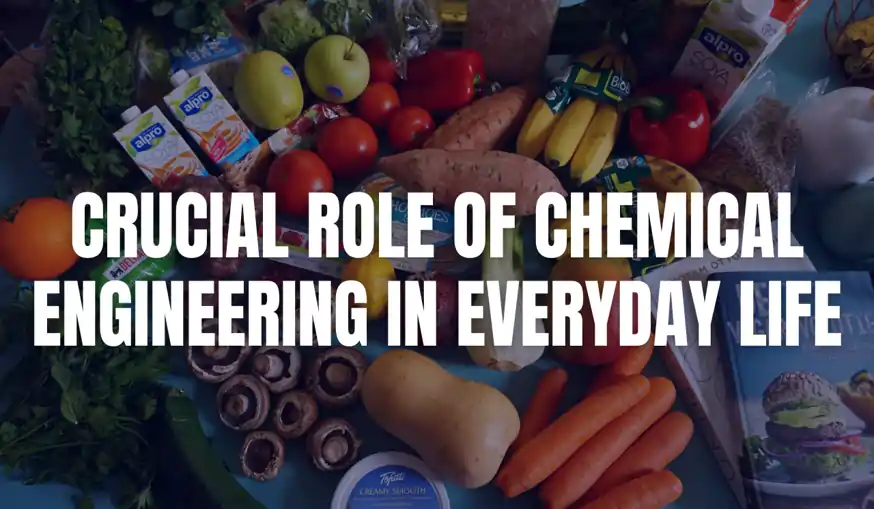In this continuous growing field of Chemical Engineering, the integration of programming and coding has become necessary because the industries are transforming from traditional practices to more advanced computational methods. Programming is not only used in data analysis and process optimization but also plays an important role in automation and control systems.
Table of Contents
In this blog we will explore the importance of programing and coding in the Chemical Engineering including their languages and applications shaping the industry. This article will be useful for students, engineers and enthusiasts opening up new opportunities and bring innovation in their work.

Importance of Programming and Coding in Chemical Engineering
Due to increasing complexity in the chemical process integral skills of programming and coding in Chemical Engineering has become necessary. These skills helps in simulation and modeling of chemical processes, which leads to accurate predictions and efficient designs.
1. Automation and Process Control
Programmable Logic Controllers (PLCs) and Distributed Control Systems (DCS) are the control algorithms for automation system programmed by the Chemical engineers. A PID (Proportional-Integral-Derivative) controller is programmed to control the temperature within a specific range by adjusting the flow rate of heating or cooling fluids.
Example: In Petrochemical Refinery, the distillation process separates crude oil into various fractions like gasoline, diesel, and jet fuel. The process involves maintaining precise temperatures and pressures in the distillation columns. Traditionally, these parameters were controlled manually, which could lead to inefficiencies and inconsistencies.
Related: Read out our full article on Crucial Role of Chemical Engineering in Everyday Life
2. Data Analysis and Simulation
Programming languages like Python are used to analyze the process data, performing statistical analyses and trends visualization. They are also used to develop machine learning models which helps in predicting outcomes based on fed data.
Simulation software like Aspen Plus or HYSYS allows engineers to model chemical processes, experiment with different operating conditions, and predict the effects of changes. These capabilities are useful in process optimization, troubleshooting, and scaling up from lab to industrial scale.
Related: Heat Transfer Calculator Web Tools developed by ChemEnggCalc.
Example: A Specialty chemicals manufacturing plant operates complex reactions that are sensitive to temperature, pressure, and reactant concentrations. Based on the data generated by the process production optimization and product quality is decided.
3. Optimization of Chemical Processes
Chemical Engineers performs optimization algorithm using programming languages for identification of the most efficient operating conditions. For example MATLAB is used to solve nonlinear optimization problems that involve balancing the reaction rate with energy consumption and raw material costs.
Example: In the production of ammonia via the Haber-Bosch process, optimizing conditions like temperature, pressure, and catalyst use is crucial for maximizing yield and minimizing costs.
Click here– Download ISO/IEC 17025:2017 / ISO/IEC 17025:2005 – Competence of Laboratories Transition Set provided by International Organization for Standardization [ISO] for all organizations performing laboratory activities
4. Safety and Risk Management
Engineers use programming to model and simulate potential hazard scenarios. For example, Computational Fluid Dynamics (CFD) is used in modelling the dispersion of hazardous gases in the leak event. Safety Instrumented Systems (SIS) are automated systems designed to take corrective actions in emergencies, these systems detect unsafe conditions and activate safety measures like shutting down processes or alarms activation.
Example: In chemical plants, handling hazardous materials and reactions under high pressure and temperature conditions poses significant safety risks. For instance, the polymerization process used to produce plastics can be highly exothermic, potentially leading to runaway reactions.

Role of Technology in Modern Chemical Engineering
Chemical Engineering a multi-disciplinary field which in used in various industries like petrochemicals, pharmaceuticals, materials manufacturing, and many more. Efficiency, Safety and Innovation in chemical processes are increased due the the integration of technology. Here we will discuss some technological advancements in the Modern Chemical Engineering.
– Automation and Process Control
Chemical Plants operations are controlled by various automation technologies such as programmable logic controllers (PLCs) and distributed control systems (DCS). These systems allow real-time monitoring and control over process parameters, reducing human error and gives optimized performance.
– Data Analysis and Simulation
Process optimization and decision-making are performed by data driven tools, software having ability to analyze the large datasets and perform simulation. These tools helps Chemical Engineering to model complex systems and predicting process behavior.
Related: 10 Mostly used Dimensionless Numbers in Chemical Engineering
– Computational Tools and Software
Various domain specific software like Aspen Plus, HYSYS and MATLAB has become the standard in the designing and analysis of chemical processes. These software helps user to perform rigorous calculations, process simulations, and optimization tasks.
– Digitalization and Industry 4.0
Digitalization of Industry concept includes Internet of Things (IoT), big data analytics in chemical engineering. These technologies provides real-time data collection, planned maintenance, and better process control.
– Environmental Technologies
Modern Chemical Engineering is focusing more towards developing green processes. It includes waste minimization, energy efficient technologies. Innovations like renewable energy integration, carbon capture, and environmentally friendly chemical processes.
Overall, technology integration plays an important role in modern chemical engineering. It enables engineers to tackle complex challenges, improve efficiency, and drive innovation in the industry.
Edition: 9th Edition, By: Don W. Green, Marylee Z. Southard
The ultimate resource for chemical engineering, covering core concepts, data, and insights. An invaluable reference for students, engineers, and industry professionals.
Buy on AmazonProgramming Languages and Tools for Chemical Engineers
Integrated skills of programming languages and specialized tools helps Chemical Engineers to perform data analysis, process simulation, automation and optimization. Each tool and language are used for specific purposes, having their own advantage and limitation.
– Python
Python is a mostly used high-level programming language used in chemical engineering for data analysis, simulation, automation, and more. Large datasets collected from sensors such as temperature, pressure, flow rates are analyzed using python libraries (NumPy, pandas). Trends visualization using Matplotlib or Seaborn, and predictive models building with scikit-learn or TensorFlow.
Example: A Specialty Chemicals manufacturing company uses Python to develop a predictive maintenance system. A machine learning model can tell when the equipment is likely to fail by analyzing the historical data on equipment performance. Such models help in timely maintenance, reducing downtime and costs.
– MATLAB
MATLAB is a high-performance language used for technical computing. It is mostly used in chemical engineering for mathematical modeling, simulation, and algorithm development.
Example: In a wastewater treatment plant, MATLAB is used to model the biochemical processes involved in breaking down organic waste. By simulating different control strategies, the use of chemicals and energy is optimized thus improves efficiency.
– Simulink
Simulink is an extension of MATLAB which is a graphical interface for modeling, simulating, and analyzing multidomain dynamic systems. It is useful for designing and testing control systems before implementation like for chemical reactors where optimal condition are essential for safety and product quality.
Example: A pharmaceutical company uses Simulink to model the fermentation process for producing antibiotics to maintain optimal temperature, pH, and oxygen levels, ensuring high yields and consistent product quality.
– Aspen Plus and HYSYS
Aspen Plus and HYSYS are process simulation software tools widely used in chemical engineering for designing and optimizing chemical processes. These tools are used to optimize process conditions, scale up from laboratory to industrial scale, and conduct feasibility studies for reactors, distillation columns, and heat exchangers.
Example: An oil refinery uses Aspen Plus to model its distillation units, where crude oil is separated into various fractions.
– Excel and VBA
Microsoft Excel, often paired with Visual Basic for Applications (VBA), is a powerful tool for data analysis, modeling, and automation. VBA extends Excel’s capabilities by allowing engineers to automate repetitive tasks, build custom functions, and develop simple user interfaces.
Example: A chemical plant uses Excel and VBA to manage inventory data and optimize supply chain operations. By automating data entry and report generation, the plant reduces the risk of errors, saves time, and improves decision-making efficiency.
Final Thoughts
Programming and coding in chemical engineering are important for process automation, analyzing and simulating data, optimizing chemical reactions, and managing safety risks. Technologies like Python, MATLAB, Simulink, Aspen Plus, and Excel/VBA are used to streamline operations, improves decision-making, and ensure safety.
Automation and process control improve efficiency, while data analysis and computational tools provides precise simulations and optimization. The integration of digitalization and Industry 4.0 technologies, along with environmental innovations, is transforming modern chemical engineering, making it more efficient and sustainable.
Resources
- Process Control and Automation. Chemical Engineering Fundamentals Review
- Seider, W. D., Seader, J. D., & Lewin, D. R. (2010). Product and Process Design Principles: Synthesis, Analysis, and Evaluation. John Wiley & Sons.
- Aspen Technology. (n.d.). Aspen Plus and HYSYS for Process Modeling. AspenTech.
- The MathWorks, Inc. (n.d.). MATLAB and Simulink for Chemical Process Control. MathWorks.
- Roush, J. (2020). Data Science and Machine Learning in Chemical Engineering. AIChE.
Disclaimer: The content provided here is for educational purposes. While efforts ensure accuracy, results may not always reflect real-world scenarios. Verify results with other sources and consult professionals for critical applications. Contact us for any suggestions or corrections.







